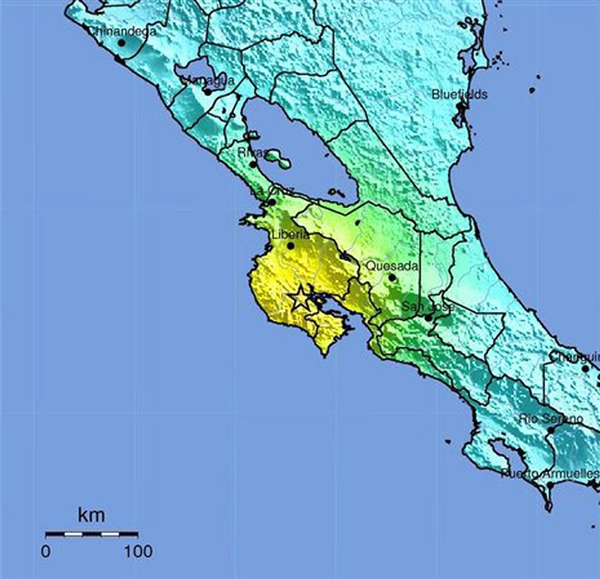A major earthquake hit northwestern Costa Rica on Wednesday, the U.S. Geological Survey said, but there were no immediate reports of casualties.
The quake -- initially given a magnitude of 7.9 but then revised to 7.6 -- struck at 10:42 a.m. ET at a depth of about 25 miles and about seven miles southeast of Nicoya, a town of some 15,000 people on a coastal area on the Pacific about 90 miles from the capital San Jose.
The Pacific Tsunami Warning Center issued tsunami warnings for Costa Rica, Panama and Nicaragua, after initially issuing warnings for a much larger area.
"It is not known that a tsunami was generated. This warning is based only on the earthquake evaluation. An earthquake of this size has the potential to generate a destructive tsunami that can strike coastlines near the epicenter within minutes and more distant coastlines within hours," the PTWC said.
'Everybody is crying'
"It was very strong, everyone is getting out because of the tsunami alert," said a worker at the Samara Tree House Inn on the northwest coast.
"Everybody is crying a lot and the telephone lines are saturated," said Diana Salas, a worker at the Hotel Punta Islita in the Guanacaste area, speaking by telephone to The Associated Press, but she added that there was no damage there.
Residents of San Jose told Reuters that phone lines were cut, electricity poles rattled and water flowed out of pools during the quake.
"It was terrible. I was on the third floor, I had never felt anything like it," Stephanie Gonzalez, a 25-year-old masters student in the capital told Reuters.

At 12:05 a.m. ET, the USGS said it had received 191 reports from people in places from El Salvador to Panama who said they had felt the ground shaking.
The USGS said that "overall, the population in this region resides in structures that are vulnerable to earthquake shaking, though some resistant structures exist."
"The predominant vulnerable building types are adobe block and mud wall construction," it said.
It was the biggest earthquake in Costa Rica since a 7.6 quake in 1991 left 47 dead. More recently, 40 died in a 6.1 magnitude quake in January 2009.
Reuters and The Associated Press contributed to this report.



Reader Comments
to our Newsletter